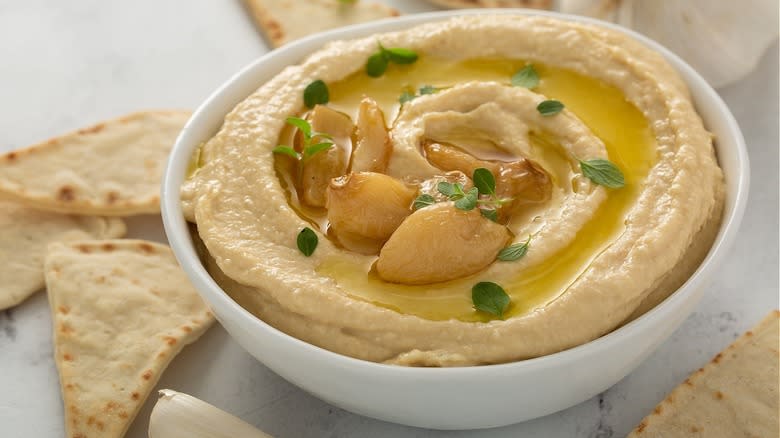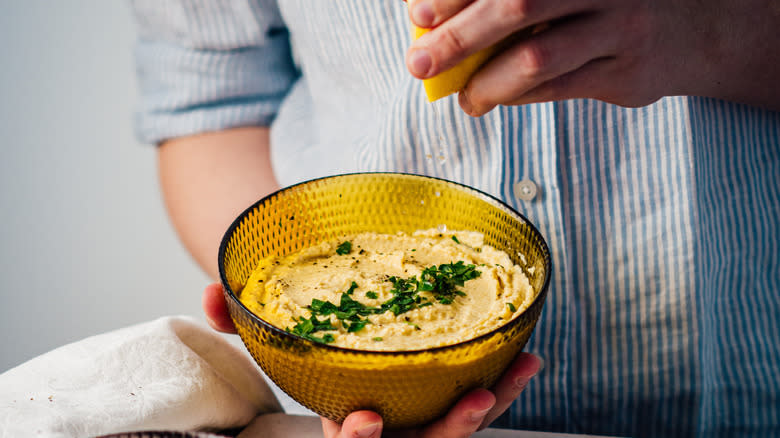The Underrated Bean You Should Use As The Base For Homemade Hummus

Hummus has been around forever -- perhaps the first written mention of it is in a 13th-century Syrian cookbook. The classic hummus recipe hasn't changed that much over time; it almost always includes chickpeas, tahini, and olive oil. But it might be time to try a new twist. Let us suggest a new legume to use as a base for your hummus: the white bean. Many purists might argue that if it's not made with chickpeas it's not hummus. Hummus means chickpeas in Arabic, after all. However, whether you call it a purée, a mash, or a dip, a version made with white beans is delicious.
White bean is a term that covers a range of bean varieties, such as cannellini, Great Northern, and navy, to name a few -- and all of them will work beautifully in hummus. White bean hummus is just as delicious, and some would say, a better overall dish than that made with chickpeas. When blended, white beans take on a very smooth, creamy texture. Chickpeas on the other hand usually have a slightly sandier texture, particularly if you use canned chickpeas because they have the skin left on. White beans also tend to have a more mild flavor that plays well off of your other ingredients. So if you're looking to switch up your hummus game or you're out of chickpeas, give white beans a try.
Read more: Vegetarian Recipes The Whole Family Will Love
Delightfully Creamy Hummus

White beans, unlike chickpeas, do not need to have their skin peeled off to be blended smoothly. The thick skin and generally denser quality of chickpeas are what give the hummus a slightly rougher texture. Dried white beans only need to soak in water, salt, and baking soda overnight to soften sufficiently, because they are naturally creamier beans with thinner skins. You can also use canned white beans, which do not need to be soaked and can be used straight out of the tin. Put all ingredients in a food processor or combine with an immersion blender. The ease of preparation and smoother texture aren't the only benefits of using white beans; they also pack more protein and fewer calories than per 100 grams than chickpeas.
If you want to branch out from standard chickpea hummus toppings and sides, you can top your purée with pomegranate seeds and chili oil, or toss in marinated artichoke hearts and garlic confit -- there's no limit to white bean hummus pairings. You can also pair different regional flavors with the hummus depending on the white bean type you've chosen. For the Italian cannellini, opt for flavors like basil and oregano, and swap pita chips for focaccia. If you've gone with Great Northern beans, which originated in Central America, draw inspiration from Peruvian cuisine with roasted corn and yellow chili peppers, and grab some warm tortillas.
Read the original article on Mashed.


